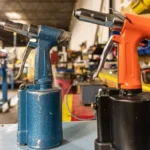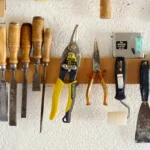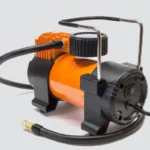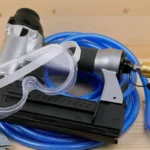Whether you’re sprucing up a chair or revamping your home’s exterior, the right air compressor can be your best friend. It’s not just about pumping air; it’s about delivering a flawless finish to your painting projects.
Let’s discuss how choosing the perfect air compressor can elevate your paint jobs from good to great.
Understanding Air Compressors
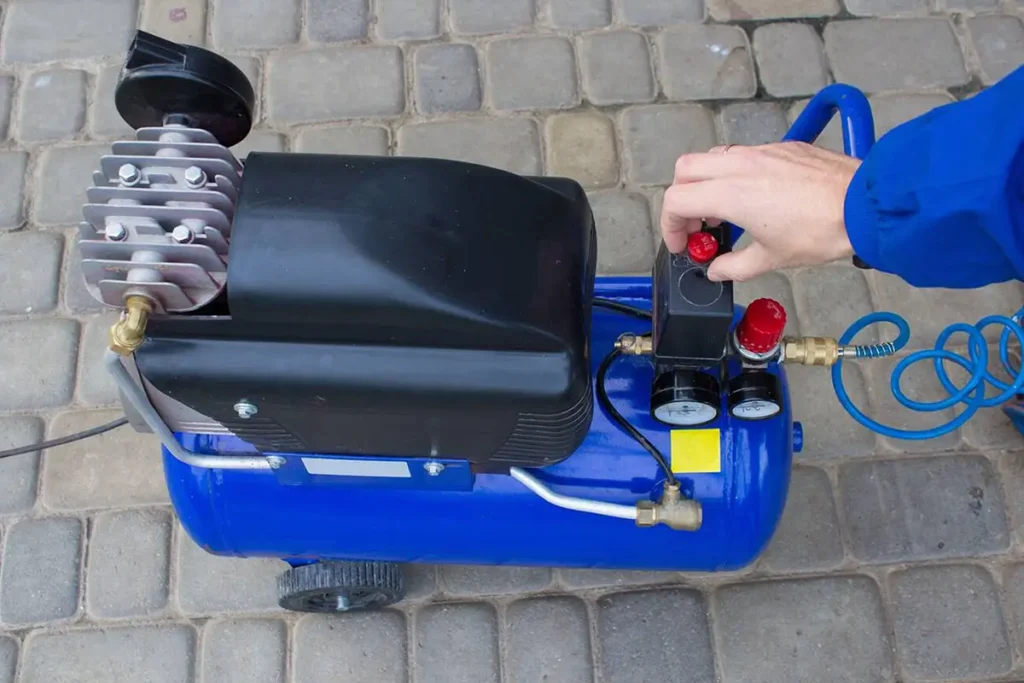
Types of Air Compressors
- Piston Compressors: The go-to for most home garages, these are affordable and fit for bursts of short use—ideal for smaller painting tasks.
- Rotary Screw Compressors: If painting is your daily bread, these might be up your alley. They handle long sessions without breaking a sweat, perfect for larger projects.
- Centrifugal Compressors: Overkill for painting? Usually, yes. These are for the heavy hitters, used in industrial applications, not your backyard shed.
Key Specifications:
- CFM (Cubic Feet per Minute): Think of CFM like your breath on a cold day; the more you can see, the colder it is. Here, more CFM means your air tools can run longer without gasping for air. Essential for tools like HVLP (High Volume, Low Pressure) spray guns which require a constant air supply.
- PSI (Pounds per Square Inch): This is the punch your compressor packs. While most tools work well at 90 PSI, spray painting can often be more flexible, but it’s critical to check your tool’s manual for the perfect match.
Tank Size and Material:
The size of the tank will determine how long you can keep spraying before the motor kicks back in. A larger tank equals fewer interruptions. Consider this when planning out your workspace and the size of your projects.
Selecting the Right Compressor for Painting
Choosing the ideal air compressor for painting projects isn’t just about picking the most powerful one; it’s about finding the right fit for your needs.
Why CFM Matters for Paint Projects
Imagine trying to water a garden with a drinking straw; that’s using a low CFM compressor for painting. You need a garden hose, one that delivers a consistent and adequate volume of air, so your paint job doesn’t end up patchy. Generally, HVLP spray guns thrive on 10 to 15 CFM, which allows for a smoother and more consistent application.
PSI Requirements
Too much pressure and you might blow your project away. Too little, and you might as well be using a paintbrush. Ensuring your compressor can match or exceed the PSI requirements of your painting tools is crucial for a professional finish.
Duty Cycle
Not every compressor is built for a marathon. The duty cycle, often overlooked, tells you how long your compressor can run before it needs a break. For continuous painting, look for a compressor with a higher duty cycle to avoid overheating and unnecessary wear and tear on your equipment.
Additional Considerations
Noise Level: Let’s cut to the chase: no one likes a ruckus, especially if you’re painting in a peaceful neighborhood. That’s why considering the noise level of your air compressor is more than just a nicety—it’s a necessity. Opt for a model that whispers rather than roars, ensuring you keep the peace while keeping up the pace.
Portability and Size: Your painting projects might not be confined to one spot. If you’re moving around, a hefty compressor won’t do. Think about whether a portable model that’s easy to move—or a stationary one for a dedicated studio space—will serve you best. Remember, bigger isn’t always better; it’s about what fits your space and your style of working.
Power Source: Electric compressors are the norm in home settings—they’re plug-and-play, easy to handle, and don’t belch fumes. But if you’re often off the grid or need something more rugged, a gas-powered compressor might be the ticket. Just be ready for a bit more noise and a need for open-air operation.
Advanced Features to Consider
Adjustable Pressure Regulator: Precision matters when you’re aiming for the perfect coat. An adjustable regulator lets you fine-tune the air pressure to suit each tool and task, preventing those pesky paint blunders that happen when power overwhelms precision.
Oil-free vs. Lubricated: Here’s the scoop—oil-free compressors require less upkeep and keep your workspace cleaner, but they can be louder and might wear out sooner. Lubricated models are quieter and often last longer, but you’ll need to keep an eye on their oil levels. Choose based on how much maintenance you’re up for and how much noise you can handle.
Automatic Drain Systems: Don’t let moisture mess with your compressor. Models with automatic drain systems take care of excess water for you, keeping your system efficient and extending its life. It’s a small feature that can save a lot of time and trouble.

Matthew Dowell
Matthew, a seasoned builder from a family of craftsmen, leads Tools Trove. His passion for tools and decades of hands-on experience fuel his commitment to providing expert reviews and insightful content. Whether you’re a pro or a DIY enthusiast, Matthew’s guidance ensures informed decisions in the world of tools.

